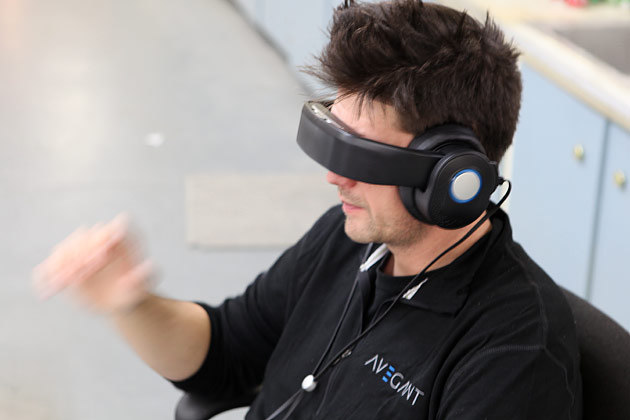Total Pageviews
Wednesday, 22 January 2014
Daily Roundup: Snapchat's adorable captcha, T-Mo's 'Mobile Money' and more!

Apple Promises to Fix iOS 7 'White Screen of Death'

Mixpanel Aims To Help Developers Deliver Targeted Messages Through New In-App Notifications
Mobile analytics company Mixpanel is unveiling a feature today that co-founder Suhail Doshi said will give developers a new way to communicate with their users.
Mixpanel customers will now be able to deliver “in-app notifications” to their users — Doshi compared them to push notifications (an area where other startups offer support), except delivered when a user is actually looking at the app, not just browsing their homescreen.
For example, a game developer could use the notifications to promote new levels or offer hints, or an e-commerce app could promote specific deals or products. Basically, it’s the same kinds of things you might use push notifications for, but hopefully less annoying and in a context where a user is more likely to be amenable to your message.
Why can’t developers just build that kind of functionality into their app? Doshi suggested that a well-funded company with a large mobile team can do it, but it’s tougher for a smaller organization or an independent developer. He also said that building it on top of Mixpanel’s analytics tools allows for very targeted messages, say if you wanted to reach users with a specific app version or based in a specific city. In fact, Doshi said developers can go “infinitely deep” with their targeting thanks to the profiles that Mixpanel has built of individual users — it has 160 million profiles so far and is adding 20 million more each month.
Mixpanel’s analytics will also allow developers to see whether their notifications are effective, and in the future, Doshi suggested they’ll also be able to A/B test different notifications and then switch out the variations that aren’t working.
I keep saying that this will be used by developers, but Doshi noted that this could be used to “non-technical” people too. He gave a demo of the notification editor, which allows customers to adjust the visual design and wording of the notifications without any programming — indeed, the smaller changes that Doshi demonstrated took only a few clicks.
This isn’t the first time Mixpanel has launched a non-analytics products. Last fall, it launched mobile surveys. The broader goal, Doshi said, is to build on top of the company’s data and existing technology and to create a broader suite of developer tools like the ones offered by “Marketo and Eloqua and Salesforce” on the web: “These things don’t exist in the ecosystem in mobile.”
via TechCrunch » Startups http://ift.tt/1mtYTRr
In a bid to regain trust, Microsoft okays storage of foreign users' data overseas
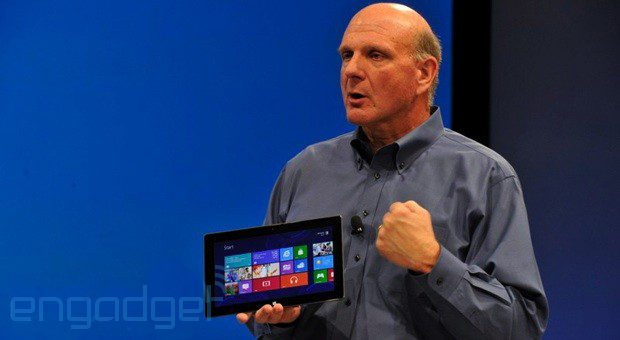
Netflix ends 2013 with 44 million subscribers, will keep experimenting with pricing
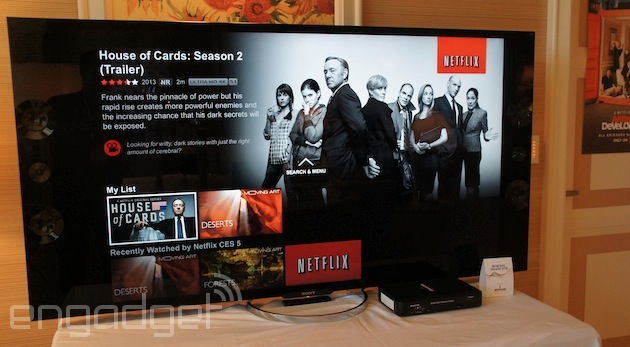
Beam saved videos to your flatscreen with Pocket's iOS update

Animated iWatch Concept Is the Most Realistic You've Ever Seen

Future Windows 8.1 update may let you pin its Store apps to the desktop's taskbar
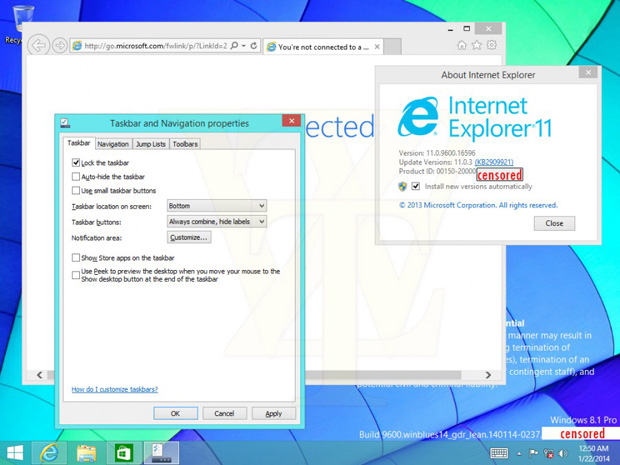
Google Chrome can listen in on your conversations (but it probably isn't)

First 100 Generic Internet Domains Include .Rich, .Sexy and .Ninja

Intel's latest education-focused tablet and Classmate PC reference designs add... more rubber?
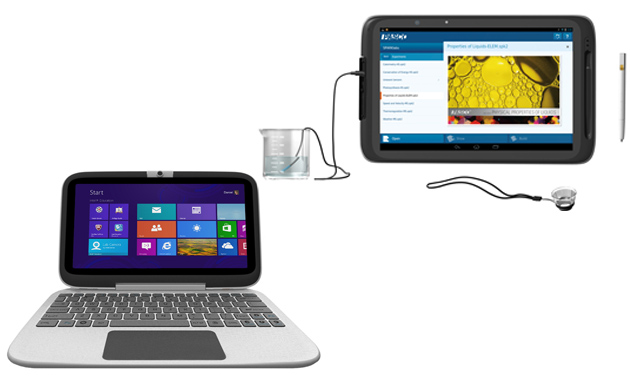
Mobile A/B Testing Startup Apptimize Raises $2.1M, Launches A Tool For Non-Developers
Y Combinator-incubated Apptimize is launching a new “Visual Apptimizer” that’s aimed at making A/B testing for mobile apps faster and easier — in fact, co-founder and CEO Nancy Hua suggested that it should make this kind of testing accessible to non-developers.
The company is also announcing that it has raised $2.1 million in seed funding from a number of big-name investors.
Apptimize launched last summer, pitching itself as an A/B testing platform (i.e., a system for testing out user response to variations of different features) that’s tailored to mobile. By inserting a small snippet of code, developers should be able to include multiple experiments in an app update that can be enabled and disabled at will.
As the name suggests, the Visual Apptimizer allows customers to make live changes using a visual, WYSIWYG editor without doing any coding. It won’t replace Apptimize’s other tools, Hua told me, but it allows a product manager or someone else who’s not particularly technical to test out small changes like revising the text or tweaking the placement of a button. You can see the editor in action in the video at the end of this post.
As for the funding, Hua said the biggest investors were Merus Capital, Google Ventures, Oliver Jung, and Tom Moss’s AngelList Syndicate. Taking the lead from the Google Ventures was TechCrunch alum MG Siegler, and Hua sent me the following statement from MG:
When we first heard the pitch for Apptimize, it sounded like something extremely useful that obviously needed to exist. But when we actually saw the product in action it seemed like a no-brainer that every single app developer should be using this service. A/B testing has been so vital to the web, and it should be even more vital to mobile. And you shouldn’t have to be the largest app in the world, Facebook, to have access to such powers.
Apparently, Apptimize raised the funding right after Y Combinator Demo Day in August but chose not to announce it until now. Indeed, Hua said they’d considered not announcing it at all, something she attributed to her “secretive” inclinations cultivated during her past experience in algorithmic trading.
Anyway, here’s the full (long) list of investors:
YCombinator S2013
Andreessen Horowitz
Start Fund
Maverick
GCINNOVATION
Ken Ross
Dana Marotto
Google Ventures
Hart Lambur
Ting Yin Kwan
Waseem Daher
Jeff Arnold
Tim Abbott
Oliver Jung
Farzad Nazem and Noosheen Hashemi
Arram Sabeti
Jotter Investment
Raj Fernando
Merus Capital
Beenos Partners
XG Ventures
Steven Fan
Starling Ventures
Charles Cheever
Andrew Valiente
Wayne Pan
DDBK PARTNERS
Albert Sheu
AngelList Fund (Tom Moss Syndicate) Fund
Chung-Man Tam
Hua added that the larger vision for the company is to become a “full-service platform” for developers: “We want to be the only thing that you need to integrate with your app.”
via TechCrunch » Startups http://ift.tt/1dPj1hF
Zenefits Adds $15M From Andreessen Horowitz To Become The All-In-One Solution For Startup HR
The thought of managing HR, benefits and payroll is enough to make most entrepreneurs grimace. However, time consuming and frustrating as it may be, it’s a part of the job description and something every startup and small business has to address sooner or later.
Having dealt with the paperwork and administrative headaches at startups before, Parker Conrad and Laks Srini launched Zenefits last year to take the pain of HR management out of the hands of founders and move it to the cloud. Beginning with a service that sought to automate the process of setting up and managing group health coverage and payroll, Zenefits enabled small businesses to transfer administration online, for free, and removed the need to dip into hiring budgets to hire a dedicated HR person.
However, the team quickly found that the opportunity extended beyond health coverage and payroll, as many of its early customers used Zenefits not just for its initial functionality, but as a full-on replacement for traditional HRIS or Human Resources Information Systems. As Zenefits looks to expand its coverage and help startups and larger businesses manage all HR-affiliated tasks, the company is taking on $15 million in Series A financing from Andreessen Horowitz, Maverick and Venrock to go after larger, enterprise customers and to begin tackling international markets.
The round, which brings the startup’s total funding to $17.1 million, also brings the addition of some key strategic guidance in the form of Andreessen Horowitz General Partner Lars Dalgaard — the former CEO and founder of SuccessFactors — who joins the company’s board of directors. SuccessFactors remains one of the largest SaaS providers of HR services in the world and was acquired by SAP in 2011 for a hefty $3.4 billion. As such, there are few entrepreneurs out there with a better perspective on the market that Zenefits is beginning to tackle.
Dalgaard joins the board at a time when Zenefits has begun to increase its focus on developing the kind of core HRIS features that are in such high demand at small and medium-sized businesses. Over the last six months, the company has added features like the ability to automate the hiring and firing of employees, while auto-generating the required documentation, add and remove staff from payroll and sending automatic alerts to employees and admins of these changes via email.
In addition, managers can use Zenefits’ cloud-based HR management system to track paid off time, for example, so that employees can apply for time off online, while simultaneously allowing admins to view balances, liabilities and calendars of their teams’ schedules. While these kinds of features can be big time savers for founders, last month Zenefits moved deeper into the realm of enterprise HR and the Workdays and SuccessFactors of the world by adding support for a wider range of HR services.
For example, beginning earlier this month, the company began offering coverage for commuter benefits, HRA and flexible spending accounts, while allowing each of these benefits to be integrated directly into a startup’s HRIS and payroll systems. As we wrote at the time, “these types of plans, which are all pre-tax, allowing employees to save 40 percent on commuting costs, medical costs, childcare costs and, in the case of the HRA, let employers pay deductibles with those pre-tax dollars.”
In terms of the value proposition here, as any manager or founder will tell you, everyone would like to add these kind of options for small businesses, but traditionally the admin and HR work required for both configuration and administration means that most would rather not deal with the headache. On top of that, the platform also now offers an affordable 401(k) plan, which allows companies to pay a $495 one-time setup fee and $105/month in account fees, while “employees pay $4/month + 7bps annually.”
With the addition of support for these types of services, Zenefits has begun to more clearly delineate its differences from the laundry list of potential competitors across HR, payroll and health coverage categories, as well as its potential value proposition. Earlier this month, Conrad told us that the company believes itself to be the first HR automation platform to “provide all-in-one debit cards that integrate with HR systems and payroll right out of the box.”
The company’s transition to a full-service platform remains a work in progress as it broadens its scope to address the whole HR management pipeline, but, a year from launch, it’s already begun to pay off. Over the last twelve months, more than 500 companies have adopted Zenefits HR management tools, meaning that the company now manages payroll, benefits and HR (or some combination thereof) for over 5,000 employees.
At the time, the Zenefits CEO told us that the company’s growth rate has been doubling every six weeks and quadrupling quarter-over-quarter. Revenue growth has been strong enough that the co-founder tells us that the company still has half of the capital raised during its seed round still in the bank. However, with a fresh $15 million in the bank, Zenefits can now significantly ramp up its investment in hiring and in the kind of marketing and sales collateral that will help spread the word among not only startups but among potential enterprise customers as well.
via TechCrunch » Startups http://ift.tt/1dPj118
BT's breakneck broadband test hits unimaginable speeds over plain ol' fiber

Blu-ray discs may soon get billions of colors with new encoding tech

Trove Rethinks Social News Discovery

Motorola brings Prip's push-to-talk service to the iPhone
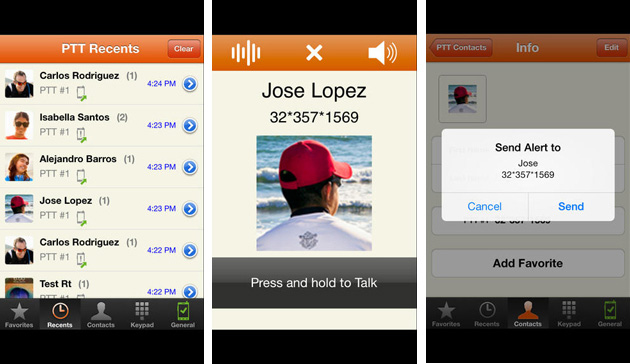
Bill es gracioso
Bill es listo, amable e increíble. Bill es generoso. Y Bill también es gracioso, como demuestra el cofundador de Microsoft riéndose de sí mismo y vistiéndose de pollo y otras cosas raras en este vídeo con Jimmy Fallon. GatesLetter.com .
via Microsiervos http://ift.tt/KFEYDw
Este time-lapse de los cielos de la región de Atacama, en Chile, es simplemente épico
Ancients de Nicholas Buer en Vimeo.
La secuencia abarca el ocaso, las sombras y el amanecer. Un bucle perpetuo desde el inicio de los tiempos y la única constante real en la vida del hombre. Hice la película tras doce días en la región de San Pedro de Atacama, al norte de Chile. San Pedro es una ciudad oasis en el desierto de Atacama, a unos 2600 metros de altitud. La ciudad es ideal como punto de partida para explorar los fascinantes paisajes que la rodean [y sobre ella] se encuentran los cielos más limpios y más oscuros de la Tierra.
via Microsiervos http://ift.tt/1aL7tGj
10-Month-Old Harry’s Lands $122.5M, Buys 93-Year-Old Factory To Go Toe-To-Toe With Gillette And Schick
Not every 10-month old startup can say that it has crossed a handful of oceans and international borders to purchase a 93-year-old factory — or raised $122.5 million to do so. Yet, not every Internet startup is trying to make waves in the prosaic world of shaving, where 85 percent of the market is controlled by a couple of weathered giants like Gillette and Schick. What’s more, while adopting a purely online and direct-to-consumer model can help startups cut out that pesky middle man, to truly reduce the friction and high costs in the market and iterate more quickly, you have to control manufacturing.
So, that’s what Jeff Raider and co-founder Andy Katz-Mayfield have done with Harry’s. Raising $122.5 million from Tiger Global, Thrive Capital, Highland Capital, SV Angel and a handful of others, Harry’s shelled out $100 million to purchase Feintechnik — a company and factory that have been manufacturing razor blades since 1920 and the source of Harry’s shaving products.
Prior to launching their online shaving supply startup, the Harry’s co-founders traveled all over the world to source the best manufacturers, but ultimately they settled on Feintechnik. The reason, Raider explains, begins with the fact that the company is itself a weathered veteran in the industry, having produced billions of razorblades over its 90-plus year history. Over the years, the company has predominantly made its name manufacturing high-quality double-edged blades, selling to leading distributors across Europe.
However, ultimately the founders said that they were attracted to Feintechnik because of its flexibility, having not only produced blades that end up in low-end razors, but the more complicated, tougher-to-produce blades that end up in higher-end, five-blade razor. It is these five blade razors that have become the staple of Harry’s since it launched 10 months ago.
But more so than the company’s strict quality control (it literally takes photographs of every blade it produces, Raider says) or that it customizes and makes its own equipment, the acquisition is a strategic move towards vertical integration. With the purchase of Feintechnik, Harry’s now has the ability to control the design and manufacturing of its products, and sell directly to consumers.
In the shaving industry, it’s a very exclusive group that can lay claim to the advantages of a vertically integrated production and supply chain. So, while it may seem like a frighteningly large investment for such a young company, the co-founders believe it will pay huge dividends over the long term. Plus, Harry’s can now say that it has joined Schick and Gillette in the land of the vertically integrated — and that the shaving market’s exclusive group now counts three.
While Harry’s is part of a new generation of sexy eCommerce companies attempting to bring a new spin to familiar, everyday products and businesses — like Warby Parker had done for eyewear and Bonobos is doing for men’s clothing — these innovative young brands still rely largely on third-party manufacturers. Though Raider is a Warby Parker co-founder himself and his former company has become the poster child for the direct-to-consumer model, not even Warby Parker can say that it truly controls the entire customer experience — from design and distribution to manufacturing.
With the ability to control the production of its razors, as well as the sales funnel and iterate more quickly based on customer feedback, it’s no surprise then that each of Raider’s fellow co-founders at Warby Parker invested in the startup’s latest round. Not only that, but the investment allows Harry’s, which, like so many young companies, currently operates at a loss to vault into the black thanks to the profitability of Feintechnik’s business.
Combined with the remaining $22.5 million of the investment left over after its purchase of Feintechnik, Harry’s to expand its portfolio of Warby Parker-inspired trendy shaving products. In explaining the success of its product that both led to its whopping investment and to its selling “over 100,000 razors” since launch, the co-founders tout Harry’s position in the market as one that combines value with a boutique, classic feel.
Harry’s shaving kits offer a razor, three replacement blades and shaving cream for $12 a pop, which most would consider a deal compared to say, popular Gillette razors that sell for $12 but only include two replacement blades. Even its five-blade razor, which sells for $25, is still a fairly good deal compared to similar products offered by Gillette and Schick. On top of its value-oriented approach, Harry’s near-term and long-term plans are aimed at increasing its appeal to young, tech-savvy consumers.
This means that the company not only offers a Warby Parker-esque buy-one-we-donate-one approach to add the feel-good aspect to patronizing their online store, but is also working to develop its data-based chops. Today, for example, Harry’s has begun to track customer purchasing habits in order to allow them to email those customers when they think it’s time for them to buy new blades. As its customer base expands and it gathers more data on their style and tastes, the company will look to expand this kind of functionality to bring more Amazon-style personalization to its shopping experience.
Furthermore, while Harry’s razors have traditionally come in a limited number of designs and kits, with its new investment and vertically-integrated supply chain, going forward, the company will look to add to its product roster. In the near-term, this means that customers can likely expect Harry’s to both expand its seasonally-inspired product lines as well as its core shaving kits.
Though the founders contend that they have nothing concrete on the radar today, it wouldn’t be a surprise to see the company tiptoe its way into, say, electronic shavers and, further down the line, expand into the larger men’s grooming market. So don’t be surprised if one day in the not-so-distant future, you find yourself perusing not only its razors but Harry’s-brand aftershave or deodorant.
In the meantime, however, the founders said they’re content to be an example to a new generation of what they call “vCommerce” companies — or those looking to offer better customer experiences through vertical integration.
via TechCrunch » Startups http://ift.tt/1mFX2Mq
Somewhere Between Coke And Nintendo, Rovio Wants To Be A Super Brand
Being a successful gaming company is hard. Not only is the competitive landscape vastly overcrowded, but the winds of change pull people from one gaming hit to another faster than you can water your Farmville strawberries.
But for the past four years, one gaming company has miraculously stayed relevant: Rovio.
In an interview with the New York Times, Rovio’s Mighty Eagle, CEO and founder Peter Vesterbacka shed some light on the future of the Angry Birds franchise.
“We will continue to do spinoffs that play on our brand strength,” said Vesterbacka. “It’s just like Nintendo and its series of Mario-based games. We want to continue expanding Angry Birds to make it a permanent part of popular culture.”
In other words, don’t expect to see Rovio pivot its energy into a brand new game with no relation to Angry Birds. In fact, Vesterbacka seems intent on growing the Angry Birds brand by whatever means necessary, whether its through new spin-off games, education, or entertainment.
Nothing short of Coke-like success will satisfy him.
“We look at iconic brands like Coca-Cola for inspiration,” said Vesterbacka. “If Coke can reach one billion servings each day, there’s no reason why we can be less ambitious. With the growth of connected devices like smartphones and tablets, we want one billion people to be interacting with our brand through games, soft drinks, parks and other products.”
To that end, the company has introduced educational materials and games that involve Angry Birds, as well as merchandise like plush toys, cookbooks, and even band-aids. And that’s just the start of it.
Rovio also has an Angry Birds cartoon series that is distributed through the game itself, transforming Angry Birds from a single gaming app on your phone into a platform for entertainment distribution. The Finnish company even has Angry Birds-themed amusement parks.
One such theme park is in China, where Rovio has made huge inroads and plans to activate parks all over the country. Angry Birds is not only one of the most popular mobile games in China, but it’s also one of the biggest markets for Angry Birds-themed merchandise.
Other, younger gaming companies have tried to mimic the success of Angry Birds with their own runaway hits, but perhaps don’t understand the importance of the brand itself.
“Some gaming companies are clueless about branding,” said Vesterbacka. “They build games to last 100 days and move on to the next one. There’s no guarantee that they will create hits. It’s difficult to find examples of anyone in entertainment that can produce hits successfully.”
Rovio recently went freemium, likely in an attempt to compete with up-and-comers like King’s Candy Crush Saga, which is available for free with the option to pay for special features. But this adaptation is one of the keys to Rovio’s success.
“In five years from now, we could be looking at a completely different way of monetizing games,” said Vesterbacka.
via TechCrunch » Startups http://ift.tt/1eSzI8g
MIT and Stanford will teach Ford's automated cars how to dodge obstacles

Tok Tok Tok, The European Local Delivery Platform Similar To Postmates, Raises $2M To Expand To London
Tok Tok Tok, a French startup that’s tackling a similar problem to U.S.-based Postmates — having somebody shop on your behalf and deliver the item within the same day or even hour — has raised its first round of funding. It’s taken $2 million in investment from undisclosed, mainly European, angel investors; money the company plans to use to expand beyond Paris where it first launched last April, to other European cities, with London up next.
That’s particularly noteworthy since Postmates, headquartered in San Francisco and funded to the tune of nearly $8 million, has yet to bring its service to Europe, though it is known to have a London office. Let the battle for first-mover-advantage this side of the pond begin.
Founded by serial entrepreneur Serge Alleyne, who has seen two exits, including selling local search engine Nomao to Ebuzzing in 2010, Tok Tok Tok’s platform aims to let customers order practically anything they would otherwise shop for locally in person, and have it delivered by one of its “runners” same-day but usually within the hour (in fact, average delivery times are actually around half an hour so far in Paris). The can be anything from groceries, electronics, office supplies, drinks and beverages, to flowers, though it’s wholly dependent on the local suppliers that Tok Tok Tok partners with. Currently it claims 300,000 items in its catalogue, from a mixture of major retailers/brands to local independents.
Where possible, the retailer’s and Tok Tok Tok’s systems are synced to give a live feed of inventory, but otherwise if something isn’t in stock, such as a food item at a local cafe, the designated and named “runner” will give the customer a call and try to source an alternative.
That’s where things get interesting. Each order placed through Tok Tok Tok can be tracked in real-time so you know exactly where your “runner” is at any one time — a bit like ordered transport on Uber — while the platform’s algorithm and machine learning works incredibly hard to give accurate delivery times and an up front price for item and delivery so you know exactly what you’re going to pay. This is a pure headache-inducing tech/logistics problem and something founder Alleyne tells me they worked hard to fine-tune over ten months.
The algorithm is powered by a lot of Big Data, he says, and takes into account things like time, day of week, distance and, presumably, traffic. “This is quite tricky,” says Alleyne, in typically understated European fashion.
“Runners” choose how they get around, supplying their own mode of transport, which can be anything from roller-skates to a motorbike or car. They are also recruited, vetted and trained by Tok Tok Tok, including a strict code of conduct.
What’s also interesting about this model is that legally it relies on a shopping “mandate”, in the sense that the buyer is still the end-customer not Tok Tok Tok, who are simply purchasing and delivering the item on their behalf. Therefore, any product returns or related complaints are between the customer and retailer.
Tok Tok Tok says it’s signed up 20,000 customers in just a few months in Paris while in Beta. Alleyne says customers are “addicted” to the service and that those who try it twice are returning on average 4 times a month. The company excepts to double this once it finally rolls out a native mobile app. Right now it’s relying on a browser-based version and SMS-only.
The startup makes money by taking a small kickback from its partner retailers for the extra business it sends them, as well as charging customers for delivery.
via TechCrunch » Startups http://ift.tt/1fZQJmh
Charlie O’Donnell’s Brooklyn Bridge Ventures Raises $8.3M To Back NYC Startups

VC Charlie O’Donnell, who has worked at both First Round Capital and Union Square Ventures, is announcing the second raise, of $8.25 million, for his New York City-based, early-stage VC fund Brooklyn Bridge Ventures.
The LPs in this second fund include Wiley Cerilli (founder of SinglePlatform), David Rose, Howard Morgan, Josh Kopelman, Brad Feld, Peter and Thomas Lehrman, Thomas Wisniewski, Richard Katzman, Alain Bankier, Matthew and Susan Daimler, Two Sigma Investments and KEC (Jeff Citron)
O’Donnell launched Brooklyn Bridge Ventures in 2012 to make investments of up to $250,000 each in early and seed-stage technology companies in the “Greater Brooklyn Area” (which includes Manhattan and other boroughs) across a variety of information technology sectors. The first $3.5 million fund, which generally leads or co-leads seed rounds, has made investments in 12 startups over the past two years. These include Orchard, Makr, Floored, Tinybop, Versa, Editorially, and Superhuman.
O’Donnell tells us that with a larger fund, he can create more infrastructure for portfolio companies and invest more into companies. The portfolio is worth over 2x, and the fund has seen 132 percent IRR, adds O’Donnell.
Previously, O’Donnell worked at Union Square Ventures and at First Round Capital, where he sourced First Round’s Investment in GroupMe, which sold to Skype in 2011. Other deals that O’Donnell has worked on for First Round include Refinery29, chloe + isabel, Backupify, SinglePlatform, Salescrunch and Docracy.
via TechCrunch » Startups http://ift.tt/1aKUlB6


